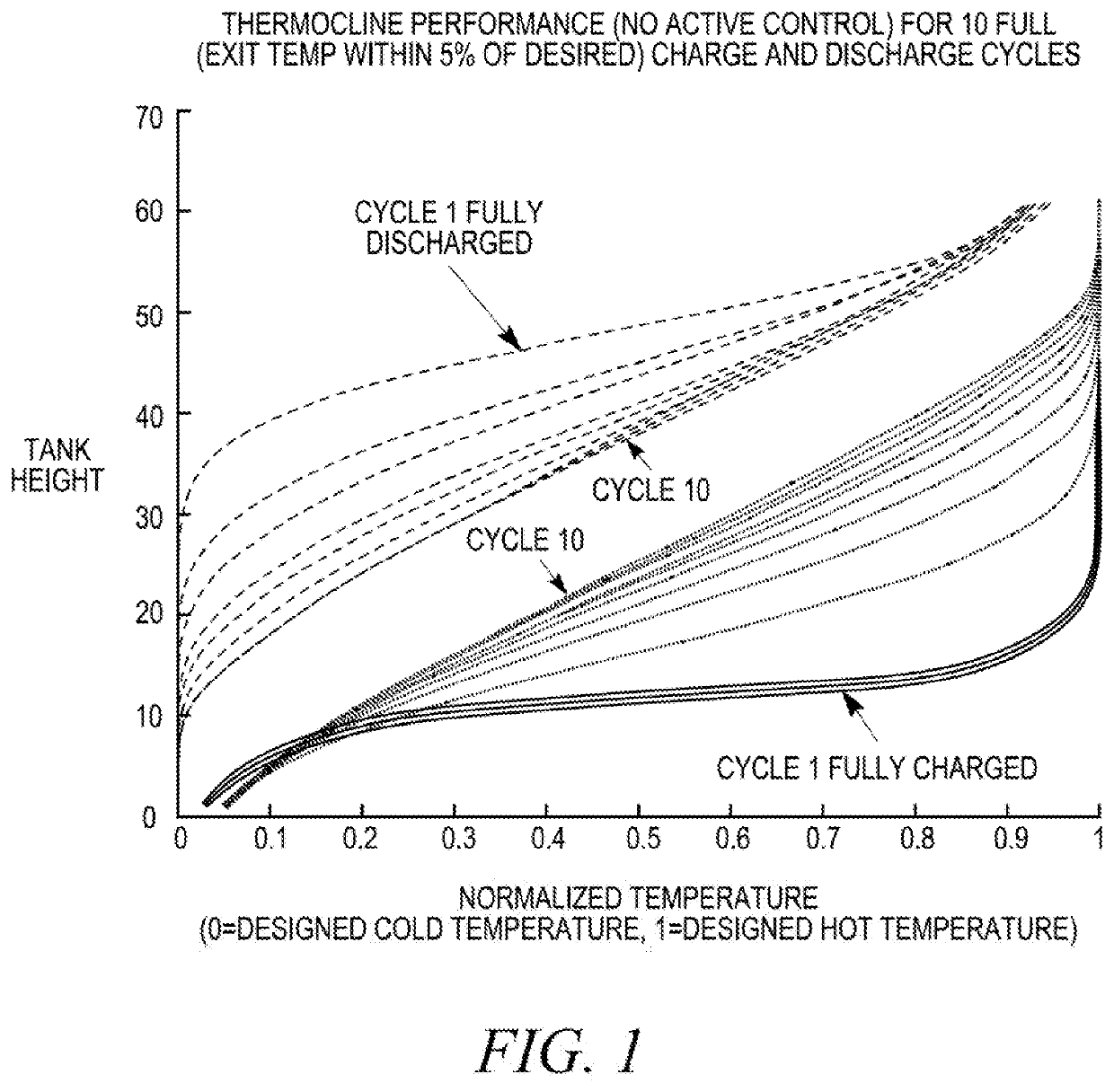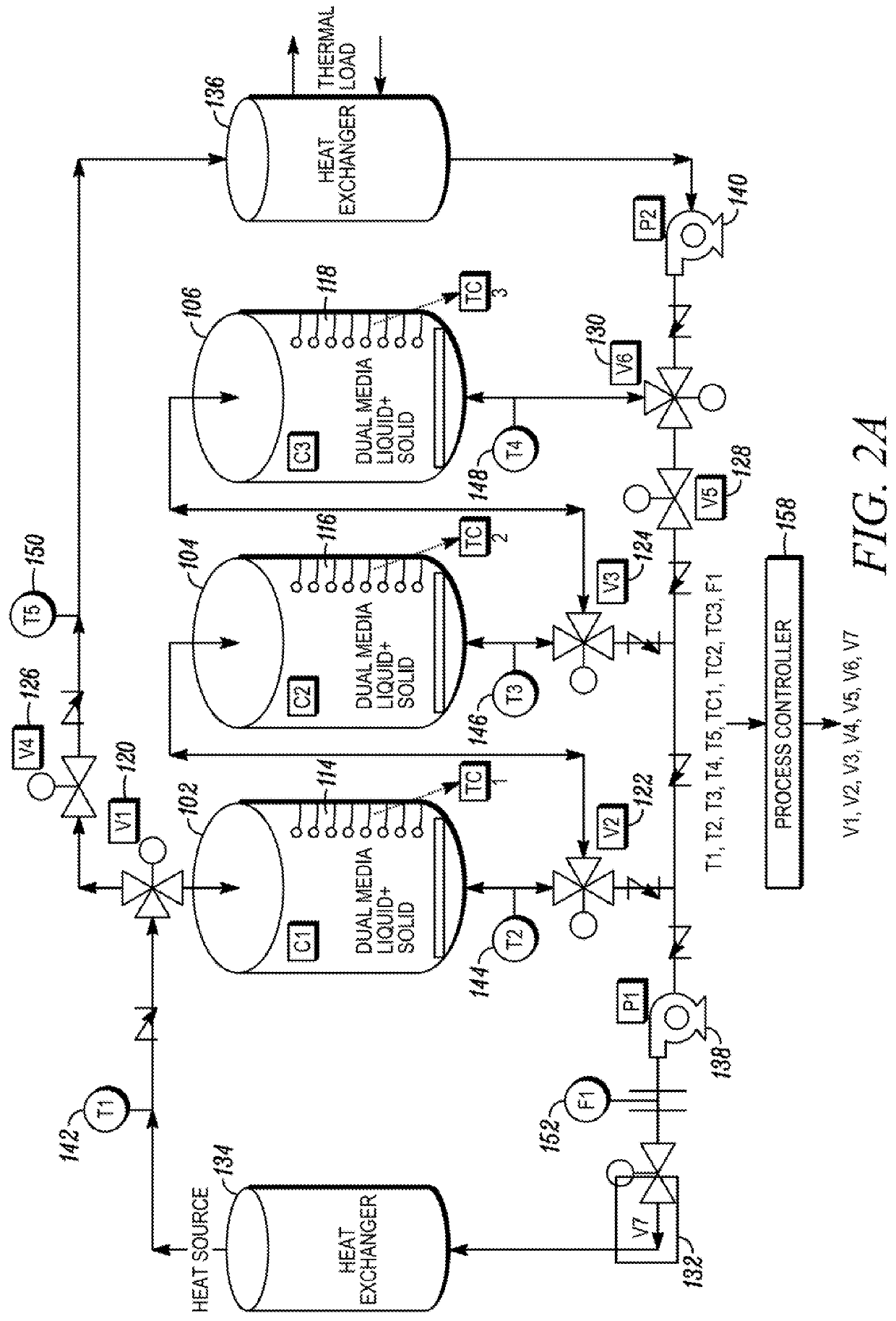Thermocline thermal energy storage in multiple tanks
a technology of thermal energy storage and multiple tanks, which is applied in the field of energy storage, can solve the problems of difficult to maintain the initial design width the inability of solar mirror arrays to heat the thermal energy storage fluid, and the widening so as to maximize the efficient use of available energy and minimize the degradation of the thermocline zone
- Summary
- Abstract
- Description
- Claims
- Application Information
AI Technical Summary
Benefits of technology
Problems solved by technology
Method used
Image
Examples
Embodiment Construction
[0037]Referring to FIG. 2A, an illustration of a thermal storage system 100 is depicted in accordance with an embodiment of the disclosure. The thermal energy storage system 100 can include multiple storage tanks configured to store thermal energy storage fluid. Although three storage tanks 102, 104, 106 are depicted, a greater or lesser number of storage tanks are also contemplated. For example, in one embodiment, the thermal energy storage system 100 could utilize four storage tanks.
[0038]In one embodiment, the thermal storage fluid can be a dual-media of solid and liquid. In one embodiment, the solid can be comprised of particles and can be made from materials such as rock, quartzite, granite, or ceramic pebbles. In another embodiment, the solid particles can be small generally spherically shaped capsules containing a phase change salt, configured to store thermal energy via a phase change. In one embodiment, the solid particles can have a diameter or cross-sectional width of abo...
PUM
 Login to View More
Login to View More Abstract
Description
Claims
Application Information
 Login to View More
Login to View More - R&D
- Intellectual Property
- Life Sciences
- Materials
- Tech Scout
- Unparalleled Data Quality
- Higher Quality Content
- 60% Fewer Hallucinations
Browse by: Latest US Patents, China's latest patents, Technical Efficacy Thesaurus, Application Domain, Technology Topic, Popular Technical Reports.
© 2025 PatSnap. All rights reserved.Legal|Privacy policy|Modern Slavery Act Transparency Statement|Sitemap|About US| Contact US: help@patsnap.com



